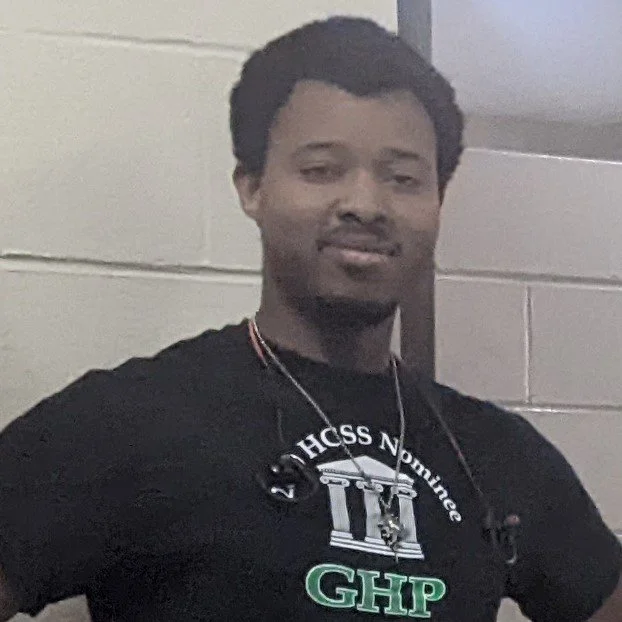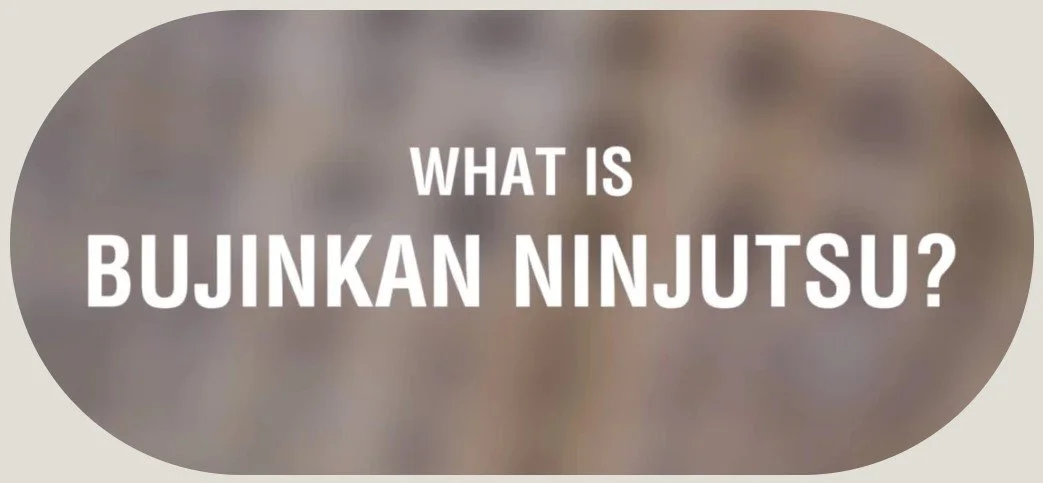
We preserve and protect the essence of nature as seen through the eyes of both the naturalist and the martial artist.
Will you join us?
Once upon a time, warriors recognized the need to remain strong and capable of protecting their loved ones, even during times of relative peace. These Savage Gentlemen and Women would choose an outdoor location and meet to train in skills of self-protection. This is the ancestor of wilderness martial arts.
These days, most martial arts train in sterile and controlled places with mats, so we don't hurt ourselves. The ancient warrior knew how to fall and not get hurt. Thus, rolling, breakfalls, and other tumbling skills are part of today's wilderness martial arts.
Ancient warriors knew how to use the weapons of their day. thus, we train with modern versions of those weapons. (Camp knife, axe, walking stick, bow and arrow, and many more)
Ancient warriors knew diplomacy and other “soft skills.” For example, we train in de-escalation and crisis management.
The ancient warrior knew the value of community and what it meant to come together for a worthy cause.
Today we call upon our ancestors to help us fill the warrior/protector void within all of us.
Remember:
Learning how to protect yourself from an assailant through martial arts techniques is just as important as learning to protect yourself from the cold by creating a campfire.
Remember:
Your first belt is the hardest.

Stay in The Loop here.

The Woodland Warrior Protector Program of Old Ways Training is the first of its kind.
This is a Tenchijin based Bujinkan training program studying in the great outdoors!
One of the key differences between the Woodland Warrior Protector Program and other martial arts programs is the use of common tools used in traditional camping. The program uses tools like the mundane ridgeline or the walking stick, or even the cooking chain to assist in protecting oneself from any danger. This allows students to develop the skills and instincts needed to defend themselves in unpredictable environments. Where ever you are!
Another key difference is the emphasis on situational awareness. In addition to teaching physical techniques, the program also trains students to be aware of their surroundings and to anticipate potential threats. This includes how to read animal behavior for safe interactions and identify potential balance hazards such as terrain that looks stable, but isn’t .
The Woodland Warrior Protector Program also places a strong emphasis on sustainability and conservation. Students are taught to respect and protect the natural environment all while learning how to defend themselves in it. This is in contrast to some traditional martial arts programs that may focus solely on self-defense or combat.
Overall, the Woodland Warrior Protector Program is a unique and innovative martial arts that combines traditional techniques with new ways in which to use them. By training students to defend themselves in outdoor environments, the program prepares them for real-world situations that traditional martial arts programs may not address.
The Woodland Warrior Protector Program is a wilderness martial arts training group that teaches Bujinkan Budo Taijutsu and Ninpo.
Drawn from Koryu (old school) martial arts, this system is unique in the martial arts world in a few ways:
• We don’t participate in sport tournaments.
• We train with tools and gear commonly associated with wild camping and bushcraft.
This program focuses on total self-protection. The physical, mental, and emotional are all important. There are 5 facets that are the inspiration of this program. They are listed below.
1. Natural places create the best learning environments.
2. The “Old Ways” of this martial art include time spent training in open fields and wooded groves.
3. This training is a “Call to the Basics” where every man was a warrior/protector of the family, community, and surrounding area.
4. The Woodland Warrior Protector Program stays useful with appropriate techniques for today’s possible situations.
5. We keep alive that “Call to the Basics” through our training.
A Complete System
One of the main reasons we don't call this system a “conventional martial art” is because it includes vital aspects that most modern martial arts don't have.
To be considered an authentic budo training, the teaching must include three distinct aspects. The first is physical training, the techniques. The second is mental teaching, an “endurance to success” kind of thinking. The third is a heart-based teaching: Answering the “Big Why” is just as important as learning how to throw someone to the ground.
There are techniques to keep the body safe from danger. There are techniques to keep the mind clear and aware. There are techniques to keep the heart young and vital.
Removing any of the above three aspects can create a dangerous imbalance in the psyche of the practitioner.
Therefore, the three qualities of a Woodland Warrior are:
1. A body capable of enduring challenge
2. A mind capable of enduring stress
3. A heart capable of enduring darkness
This is the art of endurance!
Let's bring back the Warrior/Philosopher!
A hero rises to the occasion… The warrior is already there. - Doug Norman

An Investment in your future
You can expect to learn:
How distancing can be your ally
How the right angles can place you safely and unexpectedly in the best position.
How a correctly timed action will give you control over a seemingly uncontrollable situation.
How to use improvised tools to help you survive the confrontation.
How to pit your body’s naturally strong form against your attacker’s naturally weak form.
All this in a relaxed and natural outdoor setting.
“Somewhere in the world, someone is training to do you harm.
If you aren’t training and you meet.
You will die.” – Jack Hoban

Testimonials!!
See what others are saying!!
Travis
Being at training is the best part of training.
The best part of training honestly, is probably our trainer.
Lee genuinely cares about teaching us, and he's very passionate about the martial art.
There hasn't been a single time when I've seen him just go through the motions of a technique.
He's very attentive and will work with you until you understand what you're doing, or until he finds an alternative method for you.
Kerry
This training has great potential for real world use.
The student has to apply what he learns to the situations it can't be taught.
This is the right training for so many situations, and can be used against armed or unarmed attackers.
There is very little prep work involved, you begin learning the techniques right away.
Chris
Hi, if you have any free time and you feel like filling up that free time. I have this fun training program I do called old ways training.
Would like you to consider coming. Give it a shot!!

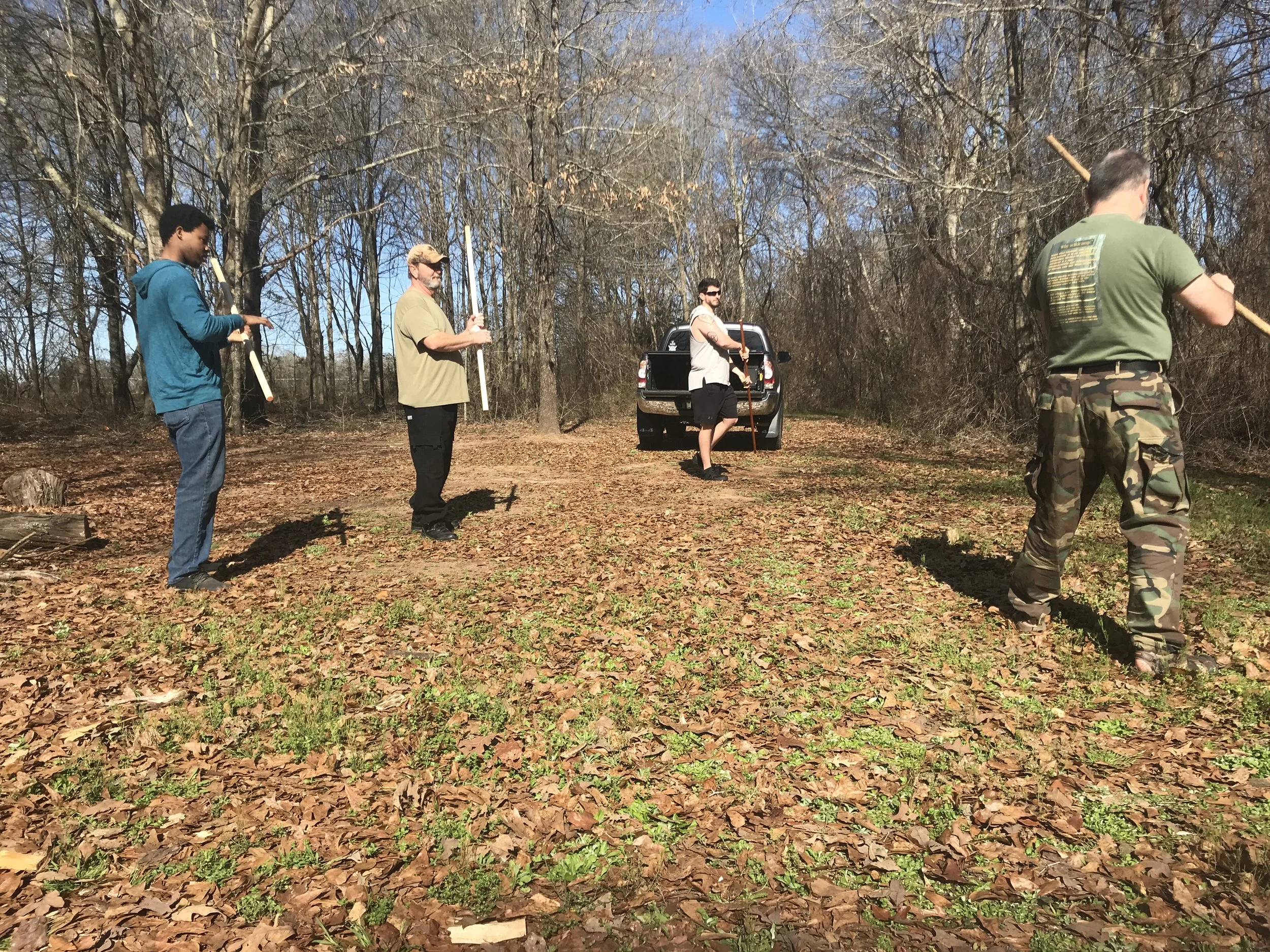


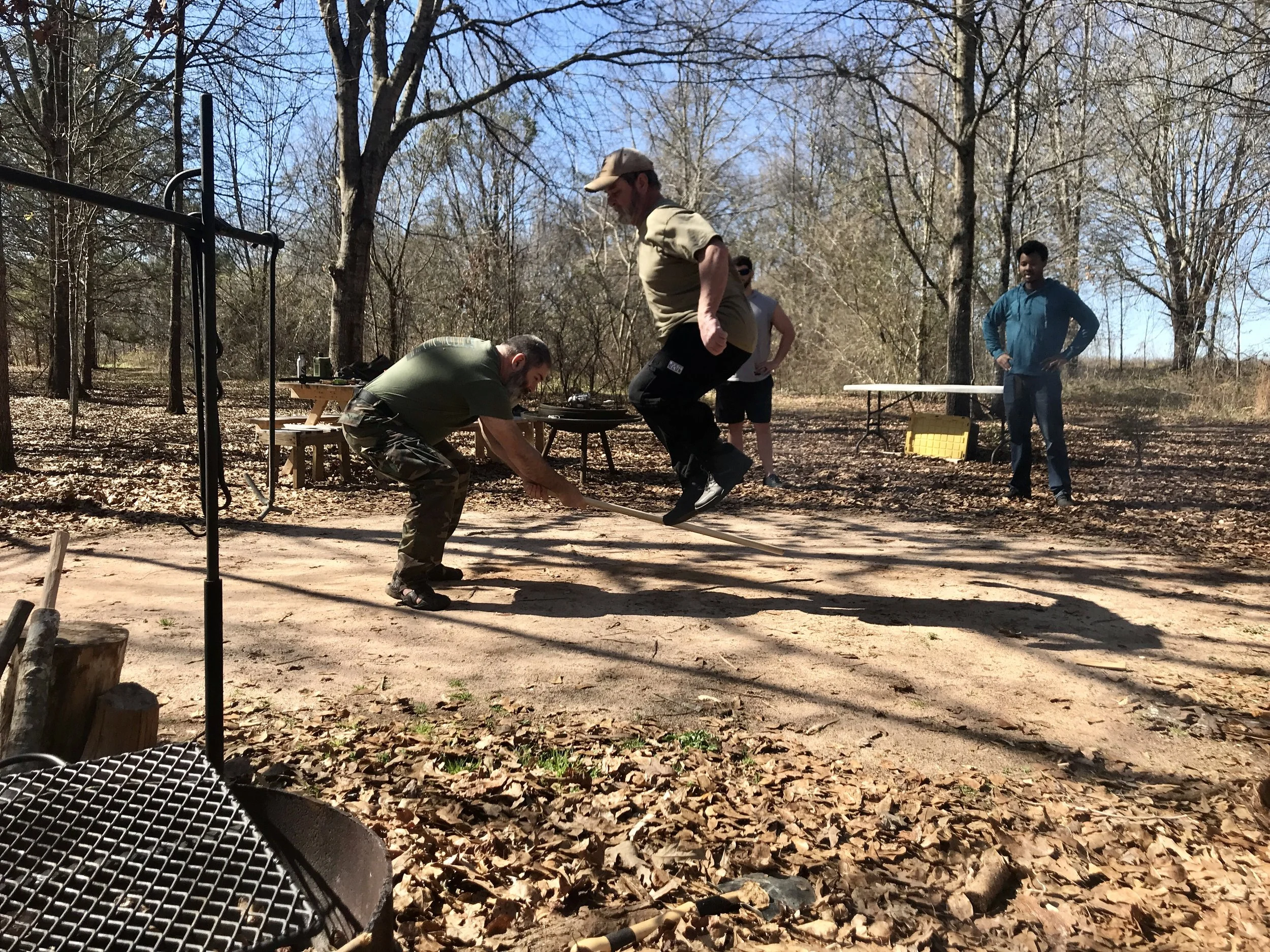

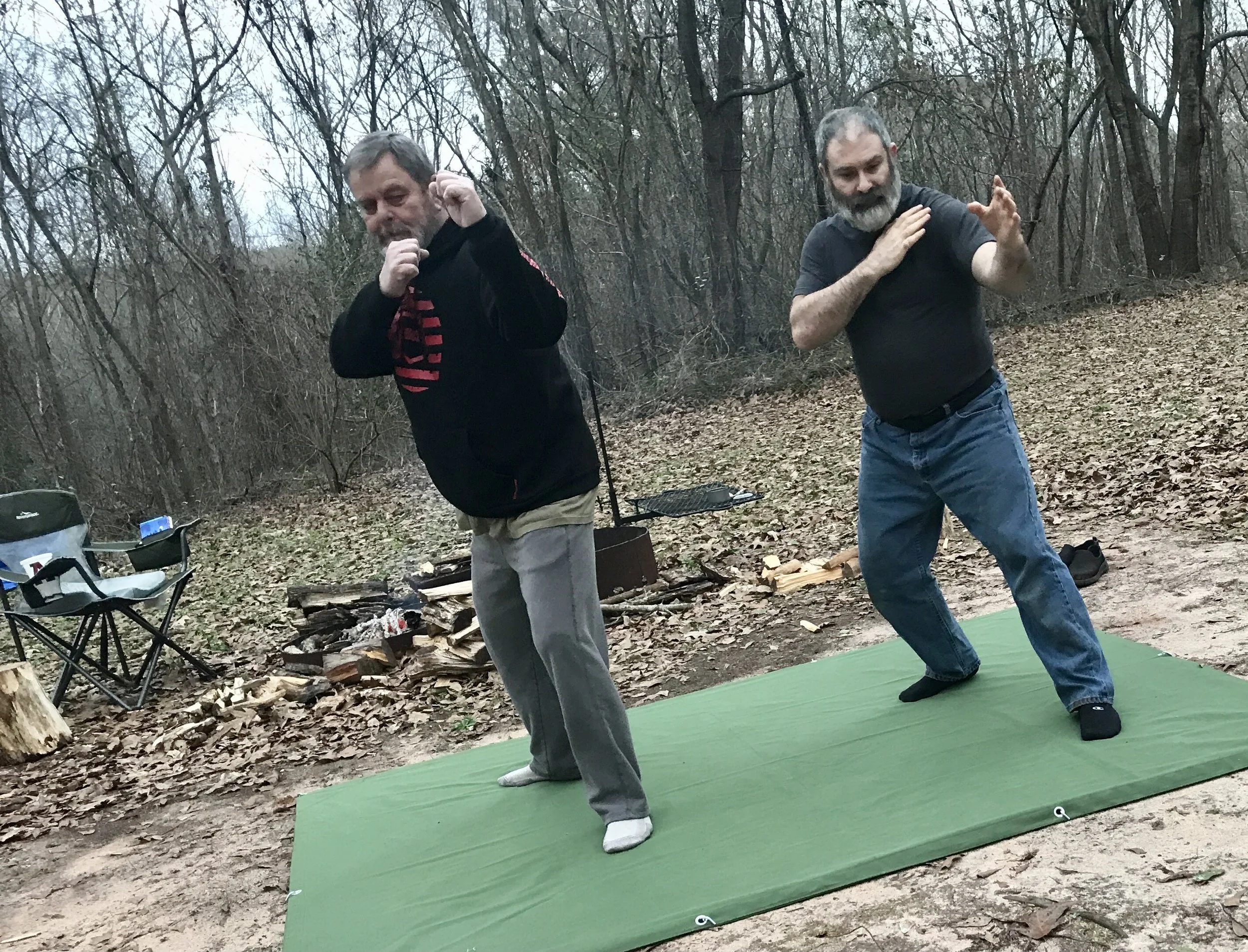
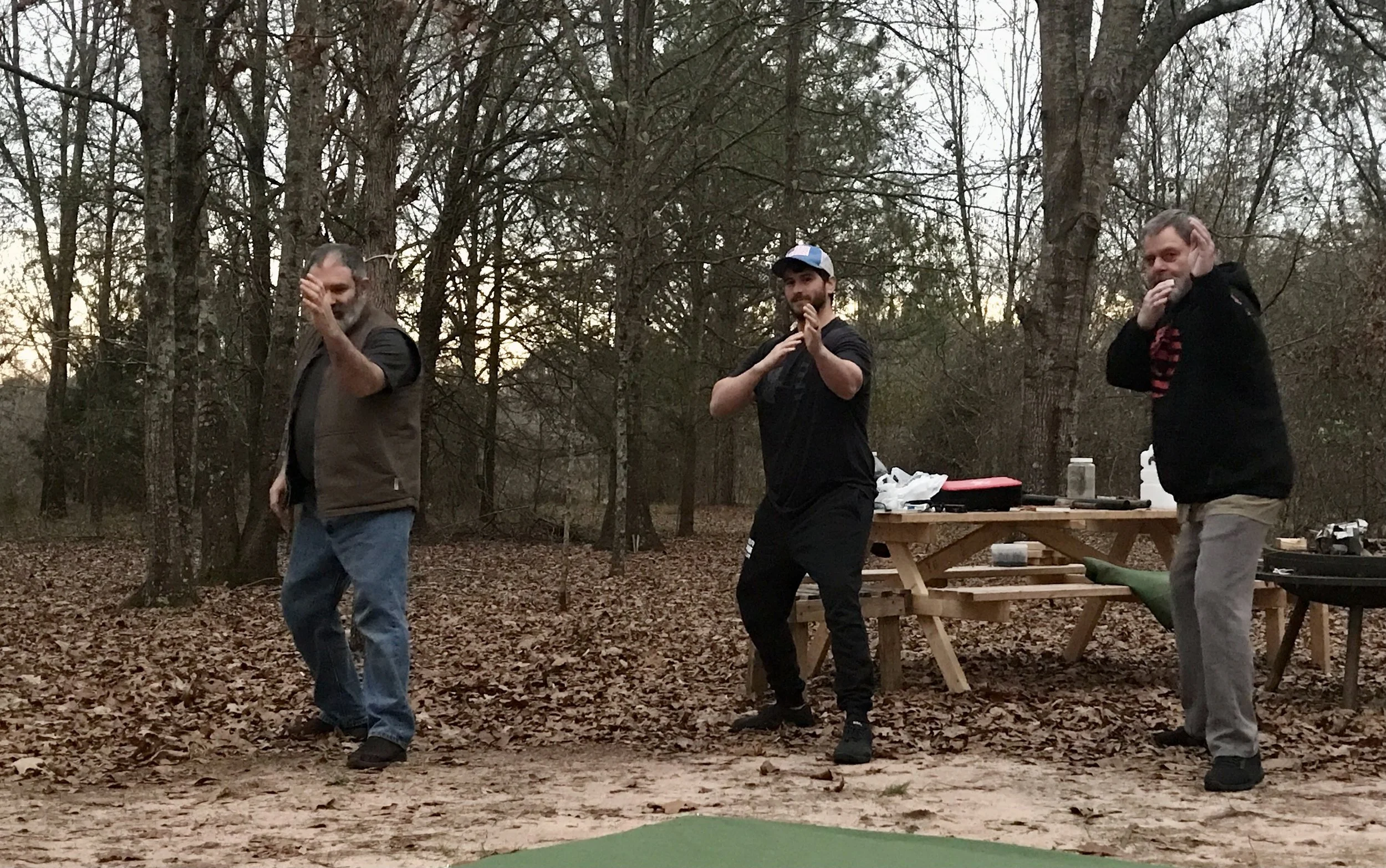

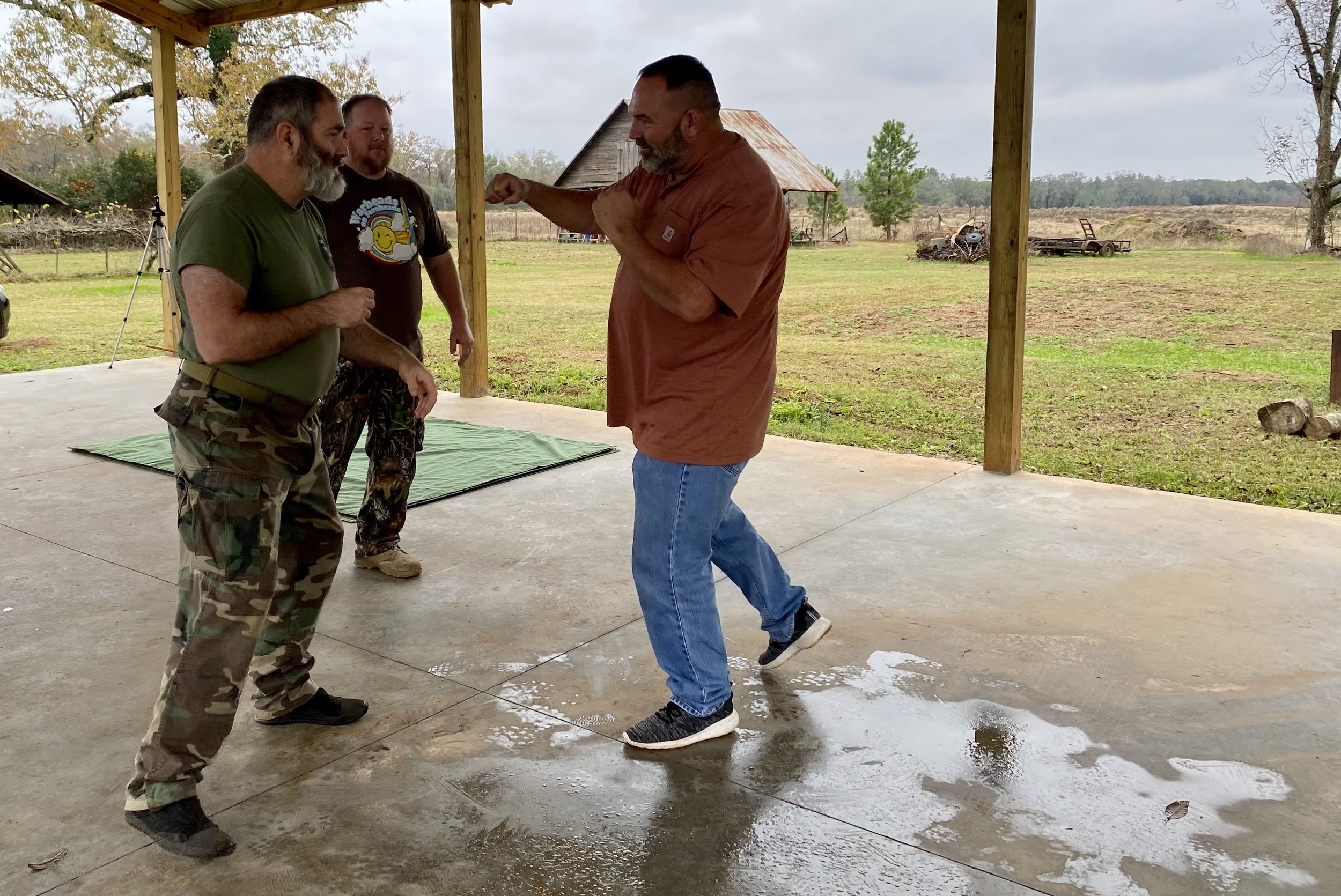
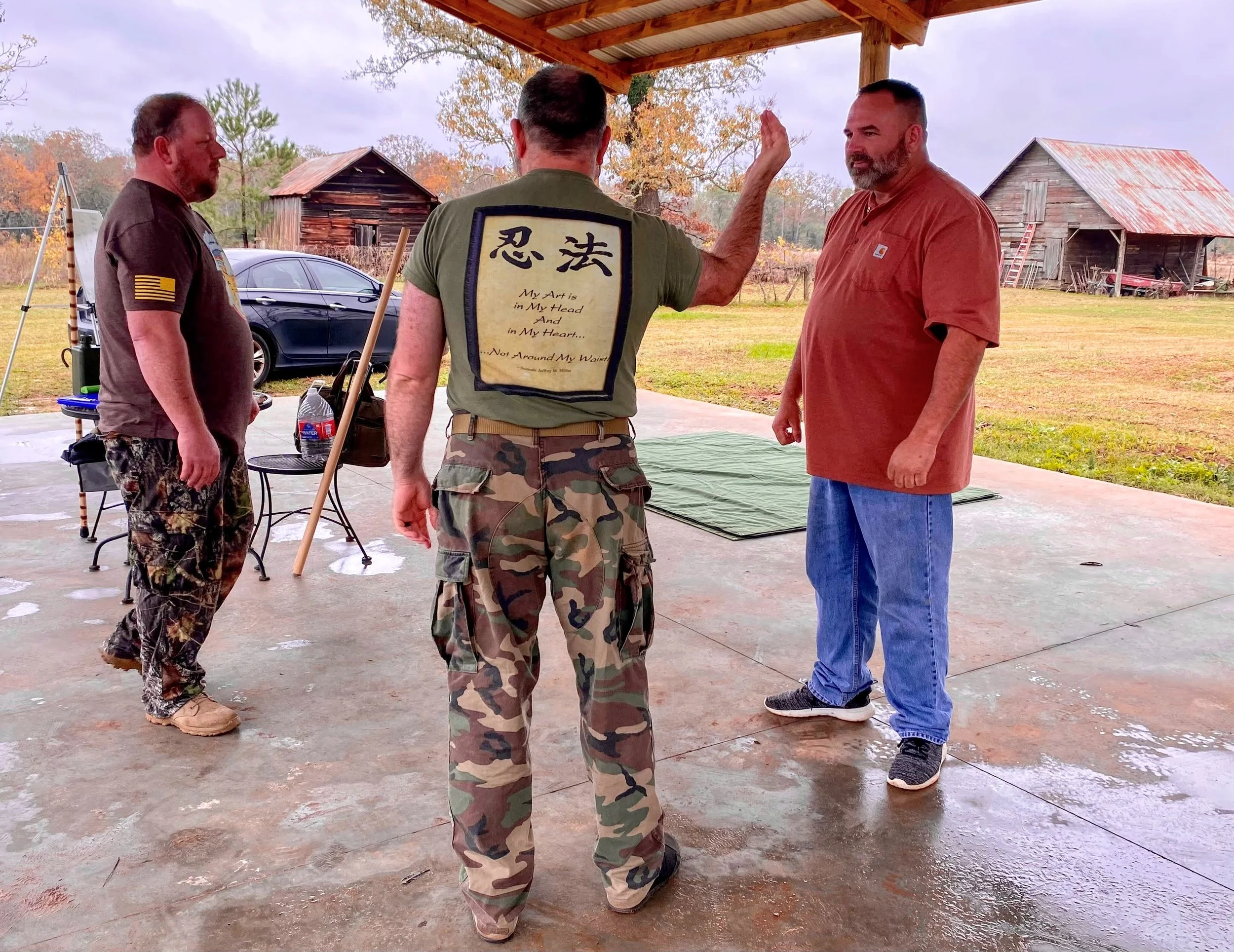
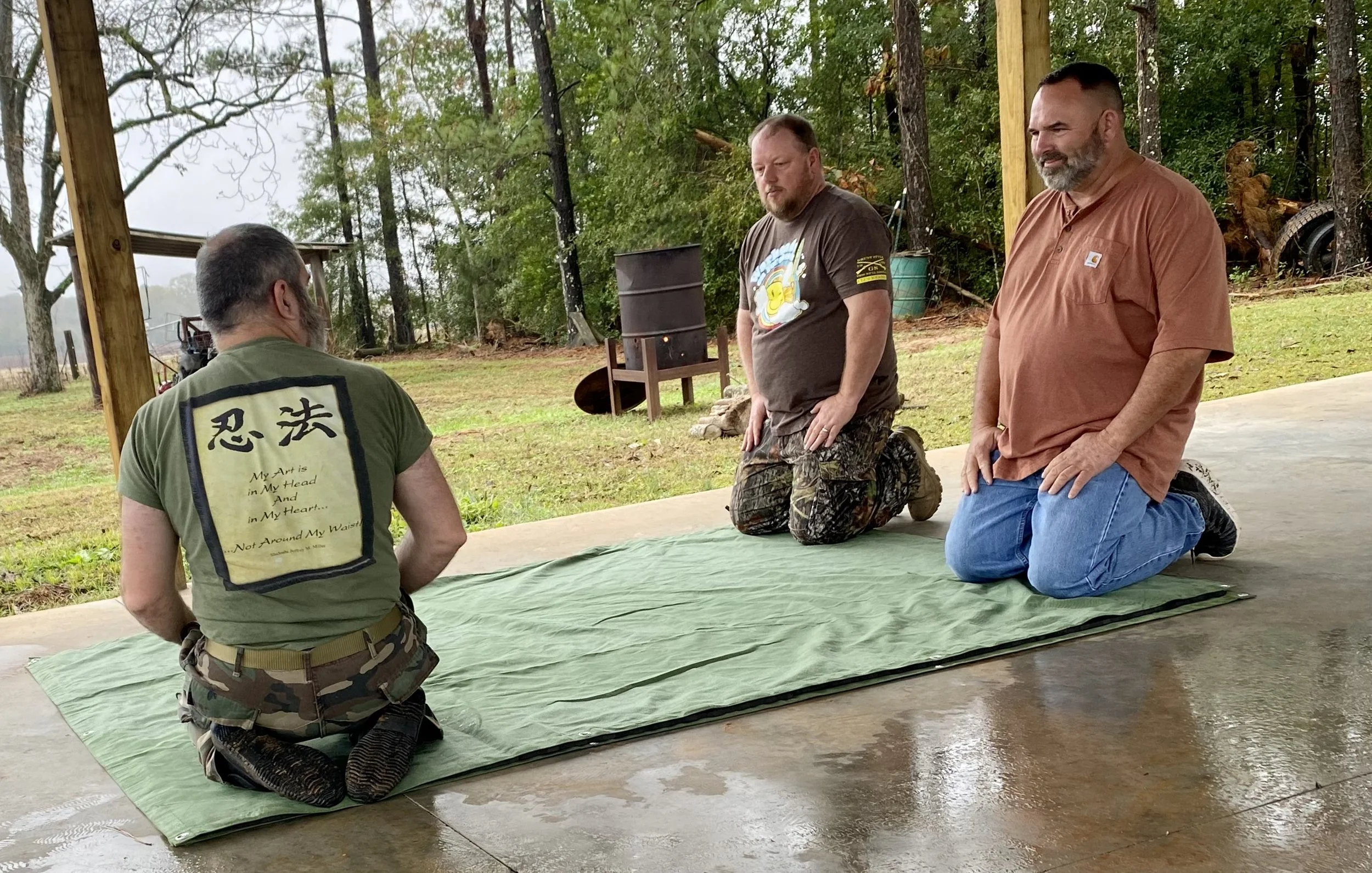


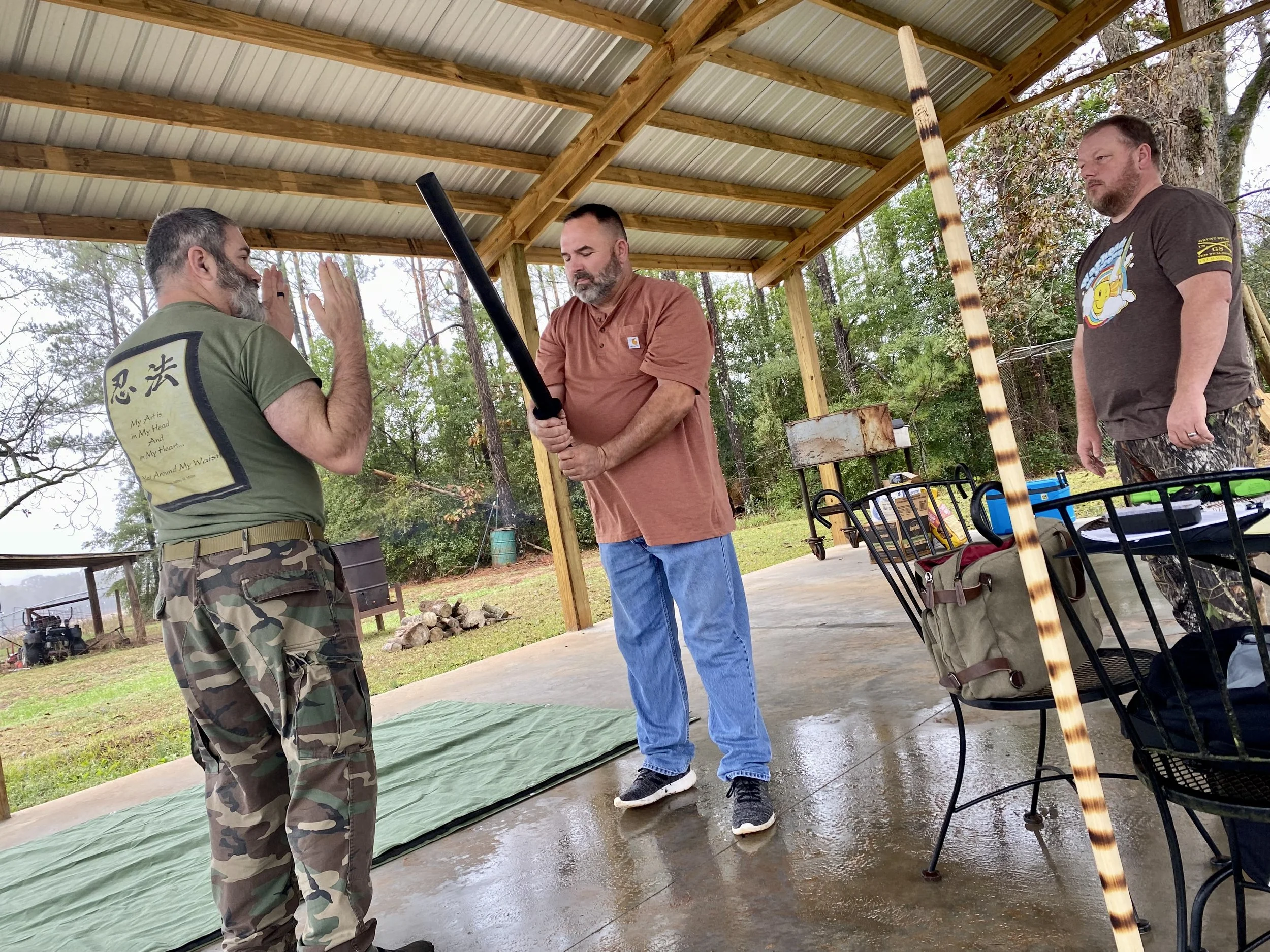



My story is a simple one
As a child I was always awkward and a bit of an outcast. Not because I was trying not to conform, but more because I didn't participate in popular vices of my age group. As a result, I was picked on… often. I became obsessed with a popular cartoon at the time, Teenage Mutant Ninja Turtles. I didn't know it then, but they resonated with me because they were my age, and were capable individuals. I wanted to be capable in life. One day my parents were driving into Columbus, Georgia, And I saw the sign that said “Ninjutsu Self-Defense” . Once I entered that dojo, my life would never be the same. It was somewhat early in the days of actual ninjutsu training in America brought over by Stephen K. Hayes, but about midway in the Ninja popularity boom that was sweeping the nation at the time. I learned that many of the ninjutsu teachings were personal power-based, that is, I could learn to do what I couldn't yet do. That had made all the difference to me because now the windows and doors blew open. Opportunity was everywhere. I could learn anything and get better at it.
Over the years, I have trained on and off as best I could with noted individuals like: Bud Malmstrom, Steven K. Hayes, Jeffrey Miller, Jack Hoban, Michael Tucker, Rick Greener, Rodney Bennett, John Miles, Brian Griffin, and others.
These days I want to help those who have an honest and pure desire to become better humans through martial arts and to share the once forgotten peace that only nature can provide.
So, to recap.
1) Awkward youth
2) Found personal power within ninjutsu
3) Now, I just want to share what I know, It has helped me In ways I cannot express and I hope it will help you.
Simple.
Now…
Will you join me in preserving and protecting the essence of nature as seen through the eyes of both the naturalist and the martial artist?
My Teacher:
Dai-Shihan Jeffery Miller
About Dai-Shihan Jeffrey M. Miller
Dai-Shihan Miller is one of the longest running teachers of Bujinkan Ninjutsu. He has trained with top teachers of the martial and meditation sciences on 3 continents and in 6 countries; including training with Soke Masaaki Hatsumi (Grandmaster of 9 historical schools of Japanese warriorship), Senior Japanese and Western Master Teachers, and Rev. Jikai Choffy (Ordained teacher of Tendai Mikkyo - Japanese esoteric Buddhist mind-science).




